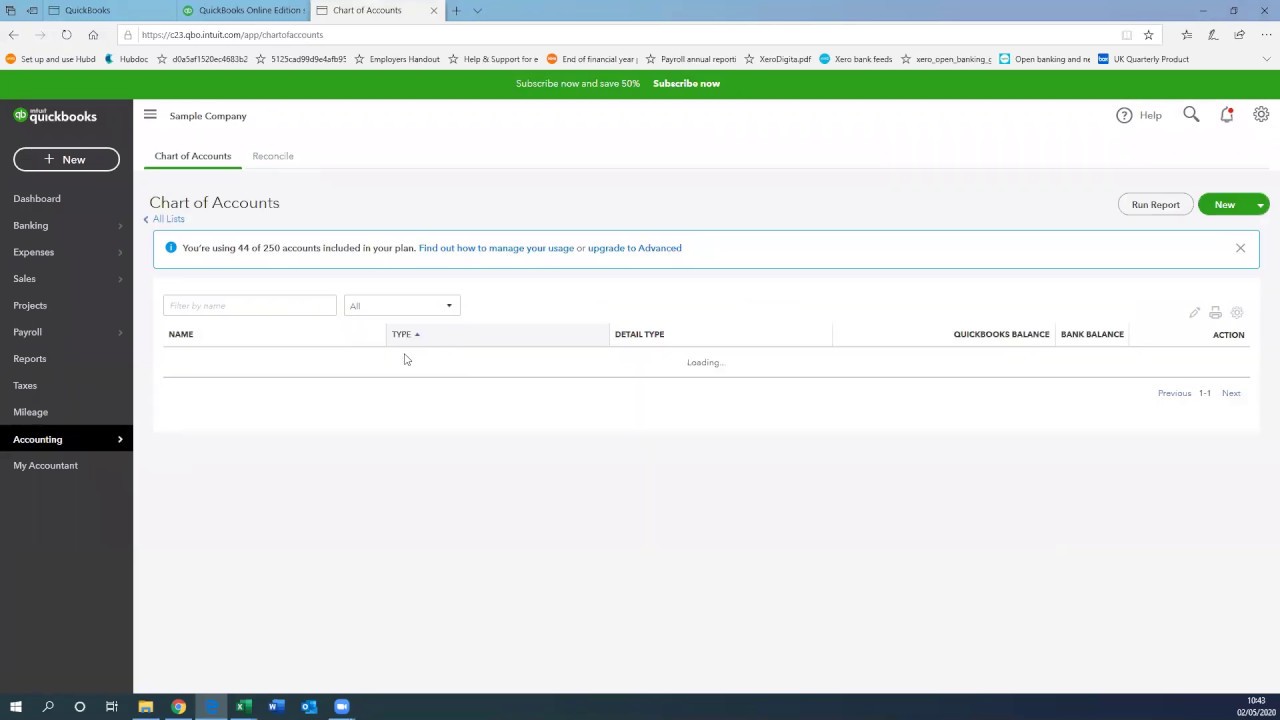

Finance
How To Switch Home Insurance With ESCROW
Published: November 14, 2023
Looking to switch your home insurance while using escrow? Discover the step-by-step process and simplify your finances with our helpful guide on switching home insurance.
(Many of the links in this article redirect to a specific reviewed product. Your purchase of these products through affiliate links helps to generate commission for LiveWell, at no extra cost. Learn more)
Table of Contents
- Introduction
- Understanding Escrow Accounts
- Reasons to Switch Home Insurance with Escrow
- Steps to Switch Home Insurance with Escrow
- Gathering Information
- Researching Insurance Policies
- Contacting Your Mortgage Servicer
- Canceling Your Current Home Insurance Policy
- Purchasing a New Home Insurance Policy
- Notifying Your Mortgage Servicer of the New Policy
- Updating Your Escrow Account
- Finalizing the Switch
- Conclusion
Introduction
Welcome to the world of homeownership! Owning a home is an exciting milestone, but it also comes with several responsibilities. One of these responsibilities is ensuring that your home is adequately protected with insurance. Home insurance provides financial security in the event of unexpected damages or loss.
When it comes to managing your home insurance, you may have heard the term “escrow.” But what exactly is escrow, and how does it relate to your insurance? In this article, we will delve into the concept of escrow accounts and explore the process of switching home insurance with escrow.
Escrow accounts are essentially an intermediary for handling your insurance and property tax payments as part of your monthly mortgage. Instead of you paying these expenses directly, your mortgage lender collects the funds and distributes them on your behalf.
Switching home insurance with escrow can provide several benefits, such as streamlining your monthly payments, ensuring adequate coverage, and avoiding potential penalties or coverage gaps. By taking the time to understand the process and following a few simple steps, you can seamlessly switch your home insurance with escrow.
In this article, we will outline the steps involved in switching home insurance with escrow, including gathering information, researching insurance policies, contacting your mortgage servicer, canceling your current policy, purchasing a new policy, notifying your mortgage servicer, updating your escrow account, and finalizing the switch.
By following these steps, you can confidently navigate the process of switching home insurance with escrow and have peace of mind knowing that your home is protected. So, let’s dive in and explore how you can switch your home insurance with escrow and ensure that you have the right coverage for your home.
Understanding Escrow Accounts
Before we dive into the process of switching home insurance with escrow, it’s crucial to have a solid understanding of what escrow accounts are and how they work. Escrow accounts are financial arrangements set up by lenders to collect and hold funds for specific purposes, such as paying property taxes and insurance premiums on behalf of the homeowner.
When you obtain a mortgage loan, your lender may require you to establish an escrow account as part of your monthly payment. Each month, a portion of your mortgage payment is deposited into the escrow account to cover these additional expenses. The funds in the escrow account are then used to pay your property taxes and home insurance premiums when they become due.
Escrow accounts serve as a way to ensure that these financial obligations are met on time, preventing any potential liens on the property or lapses in insurance coverage. It provides peace of mind for both the lender and the homeowner by ensuring that these essential expenses are taken care of.
It’s important to note that not all mortgages require an escrow account. Depending on your lender and the specific terms of your mortgage agreement, you may have the option to pay your property taxes and insurance premiums directly. However, many homeowners choose to have an escrow account to simplify their monthly payments and avoid the hassle of managing these expenses themselves.
When it comes to home insurance, having your premiums paid through an escrow account can be beneficial. It allows for predictable and manageable monthly payments, as the cost of your insurance is spread out over the course of the year. This can help alleviate any financial strain that may come with paying a lump sum premium all at once.
Furthermore, having your home insurance payments managed through escrow ensures that your coverage remains active and up to date. With automatic payments made from the escrow account, you won’t have to worry about accidentally missing a payment and risking a lapse in coverage.
Now that we have a clear understanding of escrow accounts and their role in managing home insurance payments, let’s move on to the reasons why you might consider switching your home insurance with escrow.
Reasons to Switch Home Insurance with Escrow
Switching your home insurance to be managed through an escrow account can bring several advantages and benefits. Here are some of the key reasons why you might consider making the switch:
- Streamlined Monthly Payments: By including your insurance premiums in your monthly mortgage payment, you can streamline your expenses and have a clear overview of your total housing costs. Rather than making separate payments for your mortgage and insurance, a single payment can be made to your lender, simplifying your budgeting process.
- Eliminate Risk of Coverage Gaps: Managing your insurance through escrow can help eliminate the risk of coverage gaps. With your premiums being paid automatically from the escrow account, there is a lower chance of accidentally missing a payment and having your insurance coverage lapse. This ensures that your home remains protected at all times.
- Consistent and Timely Payments: When your insurance payments are managed through an escrow account, you can have peace of mind knowing that your premiums will be paid on time. This eliminates the worry of making manual payments and potentially facing late fees or penalties if a payment is missed or delayed.
- Better Financial Planning: Having your insurance premiums included in your monthly mortgage payment can enhance your financial planning. You will have a more accurate estimate of your housing costs each month, making it easier to budget for other expenses and savings goals.
- Accountability for Lenders: By switching your home insurance to be paid through escrow, you can ensure that your mortgage lender remains accountable for managing these payments. If there are any issues or discrepancies with your insurance payments, your lender is responsible for resolving them, providing you with added protection and support.
Each homeowner’s situation is unique, and the decision to switch home insurance with escrow ultimately depends on your individual needs and preferences. However, for many homeowners, the advantages of a streamlined payment process, reduced risk of coverage gaps, and improved financial planning make switching to escrow an attractive option.
Now that we have explored the reasons to switch, it’s time to delve into the steps involved in switching home insurance with escrow. In the next section, we will guide you through the process, from gathering information to finalizing the switch. So, let’s get started!
Steps to Switch Home Insurance with Escrow
Switching your home insurance to be managed through an escrow account requires a few simple steps. By following these steps, you can smoothly navigate the process and ensure that your coverage remains intact. Here is a step-by-step guide to switching your home insurance with escrow:
- Gather Information: Start by gathering all the necessary information related to your current home insurance policy. This includes your policy number, coverage details, and expiration date. Having this information on hand will help facilitate the transition to a new policy.
- Research Insurance Policies: Take some time to research insurance policies from different providers. Compare coverage options, rates, and customer reviews to find a policy that meets your needs. Make sure to choose a policy that complies with any requirements set by your mortgage lender.
- Contact Your Mortgage Servicer: Reach out to your mortgage servicer to inform them of your intention to switch home insurance with escrow. They will provide you with specific instructions and any necessary forms or documentation required to make the switch.
- Cancel Your Current Home Insurance Policy: Once you have secured a new home insurance policy, contact your current insurance provider to cancel your existing policy. Be sure to provide them with the effective date of cancellation to avoid any confusion or overlapping coverage.
- Purchase a New Home Insurance Policy: Complete the process of purchasing a new home insurance policy from the provider of your choice. Make sure to provide your mortgage servicer’s information and any other relevant details to ensure a smooth transition.
- Notify Your Mortgage Servicer of the New Policy: Inform your mortgage servicer about your new home insurance policy. Provide them with the necessary documents and information to update their records. This step is crucial to ensure that your payments are properly allocated to the new policy.
- Update Your Escrow Account: Work with your mortgage servicer to update your escrow account with the new home insurance policy information. This includes adjusting the monthly payment amount to reflect the premium of the new policy.
- Finalize the Switch: Once all the necessary updates have been made and your escrow account is up to date, your switch to the new home insurance policy with escrow is complete. Monitor your account to ensure that the payments are being processed correctly.
Following these steps will ensure a seamless transition from your current home insurance policy to the new policy managed through escrow. It’s essential to communicate effectively with your mortgage servicer and insurance provider throughout the process to avoid any potential issues or delays.
Now that you understand the steps involved, let’s move on to the first step: gathering the necessary information. Read on to learn more about this crucial first step in switching your home insurance with escrow.
Gathering Information
The first step in switching your home insurance with escrow is to gather all the necessary information related to your current insurance policy. This information will be vital as you navigate the process of switching to a new policy. Here’s what you need to do:
1. Locate your current policy documents: Take the time to locate your current home insurance policy documents. This includes your policy declarations page, which outlines the coverage details, policy number, and contact information for your insurance provider.
2. Review your existing coverage: Carefully review your current policy to understand the specific coverage amounts and limits you currently have in place. Make note of any additional coverages, such as personal liability or valuable item endorsements, that may be included in your policy.
3. Note the policy expiration date: Take note of the expiration date of your current home insurance policy. This information will be important when selecting a new policy and ensuring a seamless transition.
4. Assess your home’s current value: Evaluate the current value of your home to determine the appropriate coverage amount for your new policy. Consider any changes or improvements made to your home since you initially obtained your current policy.
5. Compile relevant documentation: Gather any relevant documentation that may be needed during the switch, such as proof of ownership, inspection reports, or previous claims information. Having these documents readily available can help expedite the process and address any potential questions or requirements from the new insurance provider.
By gathering this information upfront, you will be well-prepared to proceed with the next steps in switching your home insurance with escrow. It’s crucial to have a clear understanding of your current policy details and be able to provide accurate information to your new insurance provider and mortgage servicer.
Now that we have covered the importance of gathering information, the next section will discuss the next step: researching insurance policies. Stay tuned to learn how to find the right policy to meet your specific needs and requirements.
Researching Insurance Policies
Once you have gathered the necessary information about your current home insurance policy, the next step in switching your insurance with escrow is to research different insurance policies. This step is crucial to ensure that you find the right coverage and provider for your specific needs. Here are some tips to help you in your research:
1. Compare coverage options: Take the time to compare the coverage options offered by different insurance providers. Consider the types of coverage available, such as dwelling coverage, personal property coverage, liability coverage, and additional endorsements or riders.
2. Evaluate policy limits: Look at the policy limits offered by each insurance policy. Ensure that the coverage limits are adequate to protect your home and belongings against potential risks. Consider factors such as the value of your home, the cost of rebuilding, and the value of your personal possessions.
3. Consider deductibles: Evaluate the deductibles associated with each policy. A deductible is the amount you are responsible for paying out of pocket before your insurance coverage kicks in. Decide on a deductible amount that you are comfortable with and fits your financial situation.
4. Read customer reviews: Check online reviews and ratings for insurance providers you are considering. Customer reviews can provide insights into the company’s customer service, claims process, and overall satisfaction levels.
5. Get multiple quotes: Request quotes from different insurance providers to compare premiums and coverages. Some insurers offer discounts for bundling multiple policies, such as home and auto insurance.
6. Consider additional coverage needs: Assess any specific additional coverage needs you may have, such as coverage for high-value items, home business insurance, or flood insurance. Ensure that the insurance policies you are considering offer options for these additional coverages.
7. Check financial stability: Research the financial stability and reputation of the insurance companies you are considering. Look for companies with strong financial ratings to ensure they can meet their policyholder’s claims obligations.
By thoroughly researching insurance policies, you can find the coverage that best suits your needs and budget. Take the time to compare options and consider factors beyond just the premium cost. A comprehensive policy with adequate coverage and excellent customer service is key to protecting your home and possessions.
Once you have selected a new insurance policy, the next step is to contact your mortgage servicer to initiate the switch. In the next section, we will discuss the importance of contacting your mortgage servicer and the information they will need throughout the process.
Contacting Your Mortgage Servicer
After researching and choosing a new insurance policy, the next critical step in switching your home insurance with escrow is to contact your mortgage servicer. Your mortgage servicer is responsible for managing your escrow account and ensuring that the correct payments are made on your behalf. Here’s what you need to know about contacting your mortgage servicer:
1. Locate contact information: Find the contact information for your mortgage servicer. This information can usually be found on your mortgage statement or through an online account portal provided by your lender.
2. Inform them of your intent to switch: Reach out to your mortgage servicer to inform them of your plan to switch your home insurance policy with escrow. This communication is important to ensure that they are aware of the upcoming changes.
3. Provide details of the new policy: Share details of your new insurance policy with your mortgage servicer. This includes the name of the insurance company, policy number, effective date, and coverage amount. Providing this information ensures that they can update their records and make the necessary adjustments to your escrow account.
4. Ask about any specific requirements: Inquire if there are any specific requirements or forms that need to be completed to initiate the switch. Your mortgage servicer may have their own procedures or paperwork that needs to be followed, so it’s important to ask for any necessary instructions.
5. Discuss any changes to your escrow account: While on the call, discuss any potential changes that may occur to your escrow account due to the new insurance policy. This may include adjustments to your monthly payment or potential refunds or credits from your previous insurance policy.
6. Clarify the timeline: Ask about the expected timeline for the changes to take effect. Understanding the timing of the switch will help you plan accordingly and ensure a seamless transition between policies.
Remember, your mortgage servicer plays a crucial role in managing your escrow account and coordinating the payment of your insurance premiums. Clear and open communication with them is key in successfully switching your home insurance policy with escrow.
Once you have informed your mortgage servicer, the next step is to cancel your current home insurance policy. In the following section, we will outline the necessary steps to cancel your policy and transition smoothly to your new coverage.
Canceling Your Current Home Insurance Policy
Now that you have informed your mortgage servicer about your plan to switch your home insurance policy with escrow, the next step is to cancel your current home insurance policy. Cancellation is an important process to ensure a seamless transition to your new coverage. Here’s what you need to do:
1. Review your policy terms: Carefully review the terms of your current home insurance policy to understand the cancellation process and any applicable fees or penalties. It’s important to be aware of any specific requirements or timelines outlined in the policy.
2. Notify your insurance provider: Contact your current insurance provider to inform them of your intent to cancel. Provide them with the effective date of cancellation, which should align with the start date of your new insurance policy to avoid any gaps in coverage.
3. Follow the insurer’s cancellation instructions: Follow the specific instructions provided by your insurance provider to cancel the policy. This may include submitting a written request, completing a cancellation form, or contacting a designated department or agent.
4. Confirm the cancellation in writing: For documentation purposes, it is advisable to send a written confirmation of the cancellation to your insurance provider. This can be done through email or certified mail, requesting a confirmation of receipt.
5. Arrange for any owed refunds: If you have already paid your insurance premium in full, inquire about any owed refunds for the unused portion of the policy. Ensure that you receive the appropriate reimbursement for the remaining coverage period.
6. Retain proof of cancellation: Keep any documentation or confirmation of the cancellation for your records. This includes the cancellation notice or email confirmation, as well as any refund receipts or correspondence related to the cancellation process.
It’s important to cancel your current home insurance policy after securing your new coverage to avoid any overlapping or duplicated payments. By following these steps and communicating clearly with your insurance provider, you can smoothly cancel your current policy and transition to your new insurance policy managed through escrow.
With your current policy canceled, it’s time to move forward and purchase your new home insurance policy. The next section will guide you through the process of selecting and purchasing a new policy that aligns with your needs and preferences.
Purchasing a New Home Insurance Policy
Now that you have canceled your current home insurance policy, it’s time to purchase a new policy that will be managed through your escrow account. This step is crucial to ensure that your home remains protected with adequate coverage. Here’s how you can purchase a new home insurance policy:
1. Research insurance providers: Research different insurance providers to find the one that best meets your needs. Consider factors such as coverage options, customer reviews, and financial stability of the company.
2. Get quotes: Request quotes from multiple insurance providers to compare premiums and coverage options. Provide accurate and detailed information about your home to get the most accurate quotes.
3. Review coverage details: Evaluate the coverage details of each policy you are considering. Ensure that the policy offers the necessary coverage for your home, including dwelling coverage, personal property coverage, and liability coverage.
4. Consider additional endorsements: Evaluate if you need any additional endorsements or riders to customize your coverage. This could include coverage for high-value items, sewer backup, or identity theft protection.
5. Assess deductibles and limits: Review the deductibles and policy limits of each insurance policy. Find a balance between a reasonable deductible that you can afford in the event of a claim and sufficient policy limits to adequately protect your home and belongings.
6. Understand policy exclusions: Carefully review the policy exclusions to be aware of any specific situations or events that may not be covered. Understanding these exclusions can help you make an informed decision and consider additional coverage if necessary.
7. Work with an insurance agent: If you prefer personalized assistance or have specific questions, consider working with an insurance agent or broker who can guide you through the process and help you find the right policy.
8. Purchase the new policy: Once you have selected the insurance policy that best fits your needs, contact the insurance provider to initiate the purchase. Provide them with the necessary information to finalize the policy and set the effective date.
Remember to notify the insurance provider that the policy will be managed through your escrow account. Provide them with the contact information for your mortgage servicer and any other requested details to ensure a smooth transition.
Purchasing a new home insurance policy is an important step in the process of switching to escrow. Take the time to thoroughly review policy details and consider your specific needs to select the best coverage for your home.
Notifying Your Mortgage Servicer of the New Policy
After purchasing a new home insurance policy, it’s important to notify your mortgage servicer to ensure a smooth transition and proper management of your escrow account. Here are the steps to take when notifying your mortgage servicer of the new policy:
1. Gather the necessary information: Collect all relevant information about your new insurance policy, including the insurance company name, policy number, effective date, coverage amounts, and any other details requested by the mortgage servicer.
2. Locate the contact details: Find the appropriate department or contact information for your mortgage servicer. This information can typically be found on your mortgage statement or through the lender’s website.
3. Initiate the communication: Reach out to your mortgage servicer via phone, email, or their preferred method of communication. Inform them that you have purchased a new home insurance policy and wish to update the information on your escrow account.
4. Provide the new policy details: Furnish the mortgage servicer with the necessary information about your new policy. This includes the insurance company’s name, policy number, effective date, and coverage amounts. Make sure to accurately convey all the details to avoid any confusion.
5. Follow any specific instructions: Your mortgage servicer may have specific instructions or forms for updating the insurance information on your escrow account. Follow their guidance and provide any necessary documentation or forms they request.
6. Confirm the update: Ensure that your mortgage servicer has successfully updated your escrow account with the new policy information. Ask for confirmation or documentation of the update for your records, if available.
7. Clarify any changes to your monthly payment: Discuss with your mortgage servicer if there will be any changes to your monthly payment amount due to the new insurance policy. They will recalculate the payment to account for the new premium and adjust it accordingly.
8. Schedule a follow-up: If necessary, schedule a follow-up communication or review with your mortgage servicer to address any questions, concerns, or outstanding items related to the update. This will ensure that the switch to the new policy is properly processed.
By notifying your mortgage servicer promptly and providing them with the necessary information, you can ensure that your escrow account is updated accurately with the new insurance policy details. This step is crucial to maintaining a seamless transition and proper management of your home insurance coverage.
Next, we will discuss the importance of updating your escrow account with the new insurance policy details to ensure smooth payment processing. Read on to learn more about this crucial step in the process.
Updating Your Escrow Account
After notifying your mortgage servicer of your new home insurance policy, the next step in switching your insurance with escrow is to update your escrow account. This ensures that your monthly payments are accurately allocated towards your insurance premiums. Here’s what you need to do:
1. Work with your mortgage servicer: Collaborate closely with your mortgage servicer to update your escrow account with the new insurance policy details. They will guide you through the process and provide any necessary forms or documentation required for the update.
2. Provide documentation: Furnish your mortgage servicer with any documentation they require to update your escrow account. This may include a copy of your new insurance policy, proof of premium payment, or any other documentation specific to their process.
3. Discuss payment adjustments: Talk to your mortgage servicer about any adjustments that need to be made to your monthly payment. The premium for your new insurance policy may cause your monthly payment to change. Ensure that the new payment amount is accurately reflected in your escrow account.
4. Address any overages or shortfalls: If there is an overage or shortfall in your escrow account due to the switch, work with your mortgage servicer to rectify the situation. They will guide you on how to handle any excess funds or any additional payments needed to cover any shortfalls.
5. Confirm the update: Verify with your mortgage servicer that the escrow account has been successfully updated with the new insurance policy information. This ensures that your monthly payments will be allocated correctly towards your insurance premiums.
6. Keep documentation: Retain any documentation or confirmation provided by your mortgage servicer regarding the update of your escrow account. This will serve as proof of the update and can be referenced in the future if needed.
Updating your escrow account with the new insurance policy information is a crucial step in the process of switching to escrow. It ensures that your monthly payments are accurately allocated towards your insurance premiums and that your coverage remains intact.
Next, we will guide you through the final step in the process: finalizing the switch to your new home insurance policy with escrow. Stay tuned to learn how to wrap up the process and ensure a seamless transition.
Finalizing the Switch
After updating your escrow account with the new insurance policy details, the final step in switching your home insurance with escrow is to finalize the process. This involves reviewing all the changes made, confirming the proper allocation of payments, and ensuring a seamless transition. Here’s what you need to do:
1. Review all updates: Take the time to review all the updates made throughout the switch process. Ensure that your new insurance policy details are accurately reflected in your escrow account, including the policy number, effective date, coverage amounts, and revised monthly payment.
2. Confirm the payment schedule: Verify that the payment schedule for your new insurance policy is properly set up within your escrow account. Ensure that the payments will be made on time and in the correct amount.
3. Monitor subsequent payments: Keep a close eye on your future mortgage statements to ensure that subsequent payments are correctly allocated to your insurance premiums. Check that the payments are accurately reflected and that there are no discrepancies.
4. Address any concerns promptly: If you notice any discrepancies or inconsistencies in your escrow account or payment allocation, address them with your mortgage servicer immediately. Promptly addressing any concerns can help prevent potential issues down the line.
5. Retain documentation: Keep all the documentation related to the switch process, including confirmation of your new insurance policy, communication with your mortgage servicer, and any other relevant paperwork. These documents will be valuable for future reference and for maintaining a record of the switch.
By finalizing the switch and ensuring that all the updates are accurate, you can have peace of mind knowing that your new home insurance policy is successfully managed through your escrow account.
It’s important to review your home insurance policy annually and make any necessary updates or adjustments to ensure that you have adequate coverage. Additionally, if there are any changes to your property or circumstances that may impact your insurance needs, notify your insurance provider and mortgage servicer promptly.
Congratulations on successfully switching your home insurance with escrow! By following the steps outlined in this guide, you have taken an important step towards protecting your home and streamlining your monthly payments.
Remember, if you have any questions or concerns throughout the process, don’t hesitate to reach out to your insurance provider or mortgage servicer for assistance. They are there to help guide you through the transition and ensure that your insurance needs are met.
Thank you for reading this guide, and we hope it has been helpful in navigating the process of switching your home insurance with escrow. Here’s to a seamless transition and peace of mind in protecting your most valuable asset.
Conclusion
Switching your home insurance to be managed through an escrow account can provide numerous benefits, including streamlined payments, reduced risk of coverage gaps, and improved financial planning. By following the steps outlined in this guide, you can successfully navigate the process and ensure a seamless transition.
Understanding the concept of escrow accounts and their role in managing home insurance payments is essential. It empowers you to make informed decisions about how to protect your home and handle your insurance payments.
Throughout the process, it’s important to gather all the necessary information, research different insurance policies, and make a well-informed decision based on coverage options, pricing, and customer reviews. By comparing policies and finding the one that suits your needs, you’re on your way to securing the right protection for your home.
Remember to notify your mortgage servicer about the new policy, cancel your current home insurance policy, and update your escrow account with the new policy details. Clear communication with your mortgage servicer ensures that your payments are correctly allocated and assures a hassle-free transition.
Finally, finalize the switch by reviewing the updates made, monitoring subsequent payments, and addressing any concerns promptly. Retaining documentation throughout the process will serve as evidence of the switch and provide important reference material for the future.
Switching your home insurance with escrow may seem like a complex process, but with the right knowledge and careful execution, it can be accomplished smoothly. It’s important to remember that each homeowner’s situation is unique, so adapt these steps to best fit your individual needs.
Thank you for reading this guide on how to switch your home insurance with escrow. We hope that it has provided you with valuable insights and guidance. Protecting your home is an important responsibility, and by utilizing escrow accounts, you can simplify your payments and ensure that your coverage remains intact.
If you have any further questions or need additional assistance, don’t hesitate to reach out to your insurance provider or mortgage servicer. They are there to support you throughout the process and ensure that your home is appropriately protected.
With your new home insurance policy in place, you can have peace of mind knowing that your most valuable asset is safeguarded, and you can focus on enjoying the comfort and security of your home.














